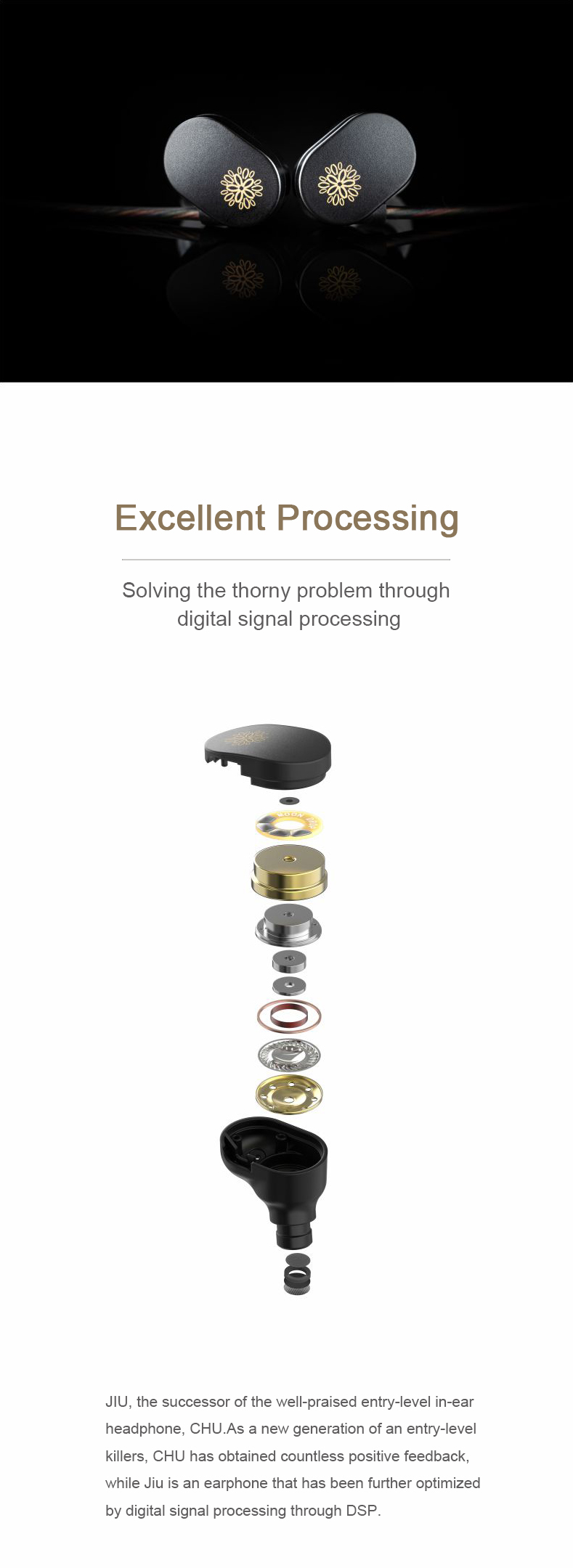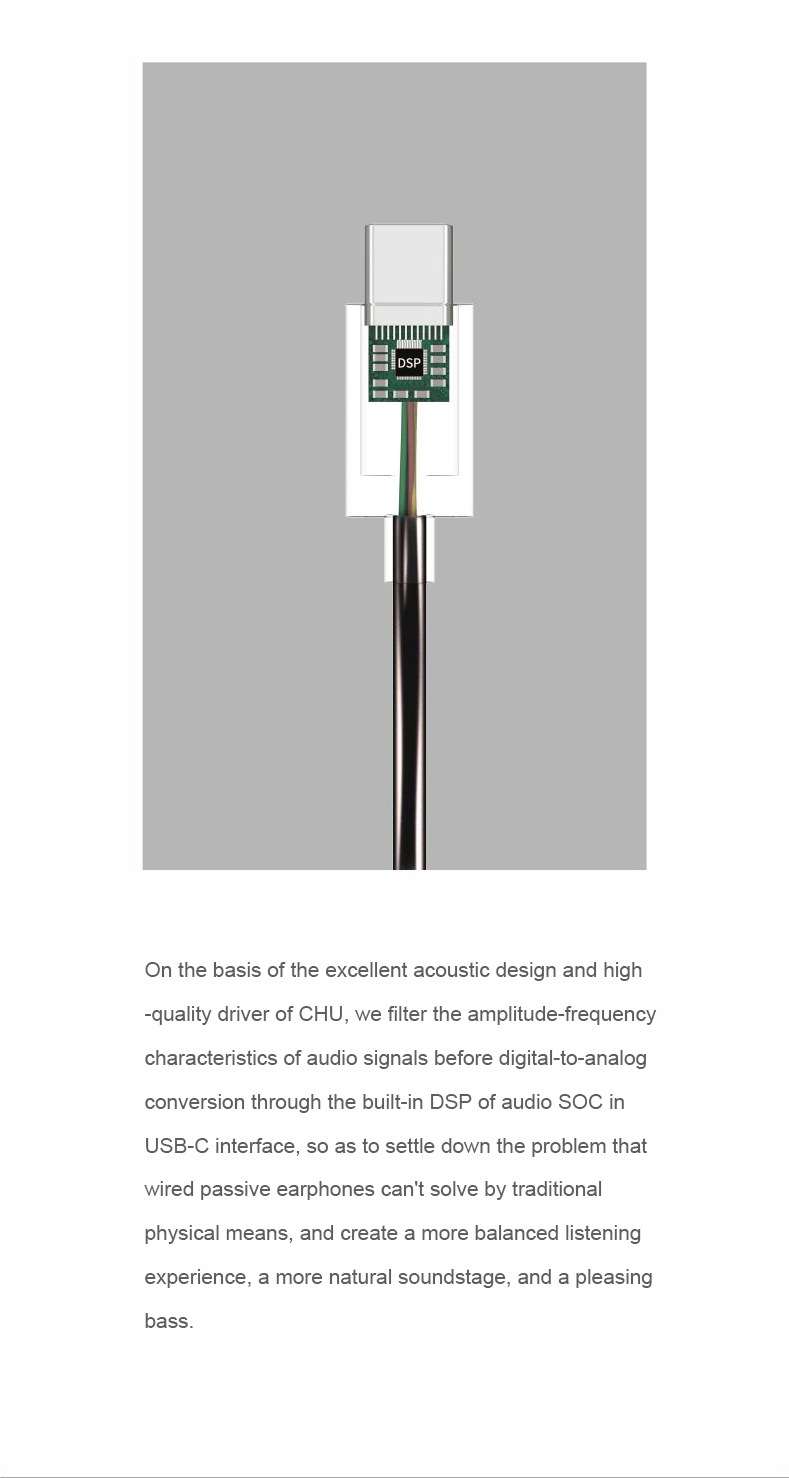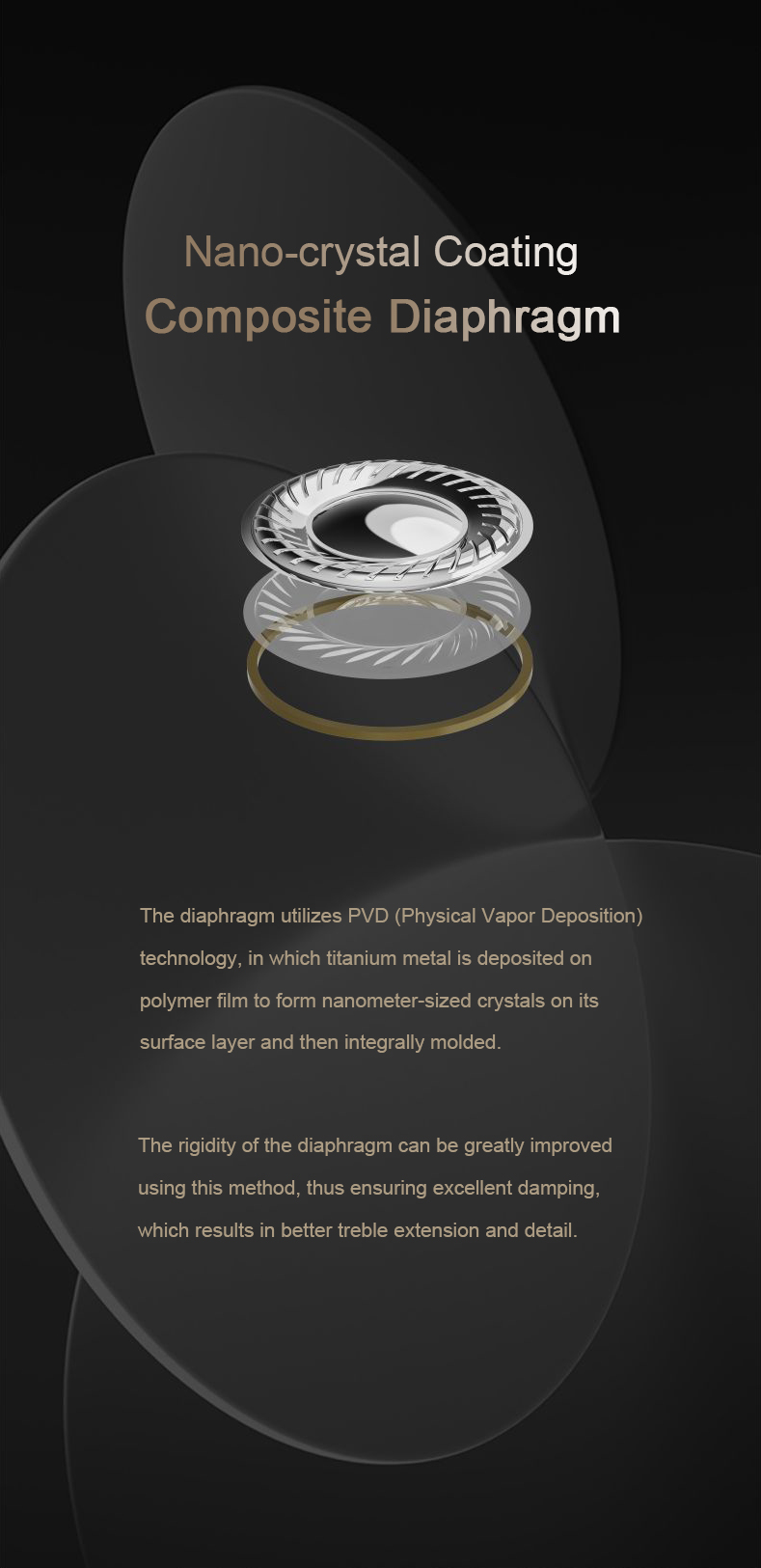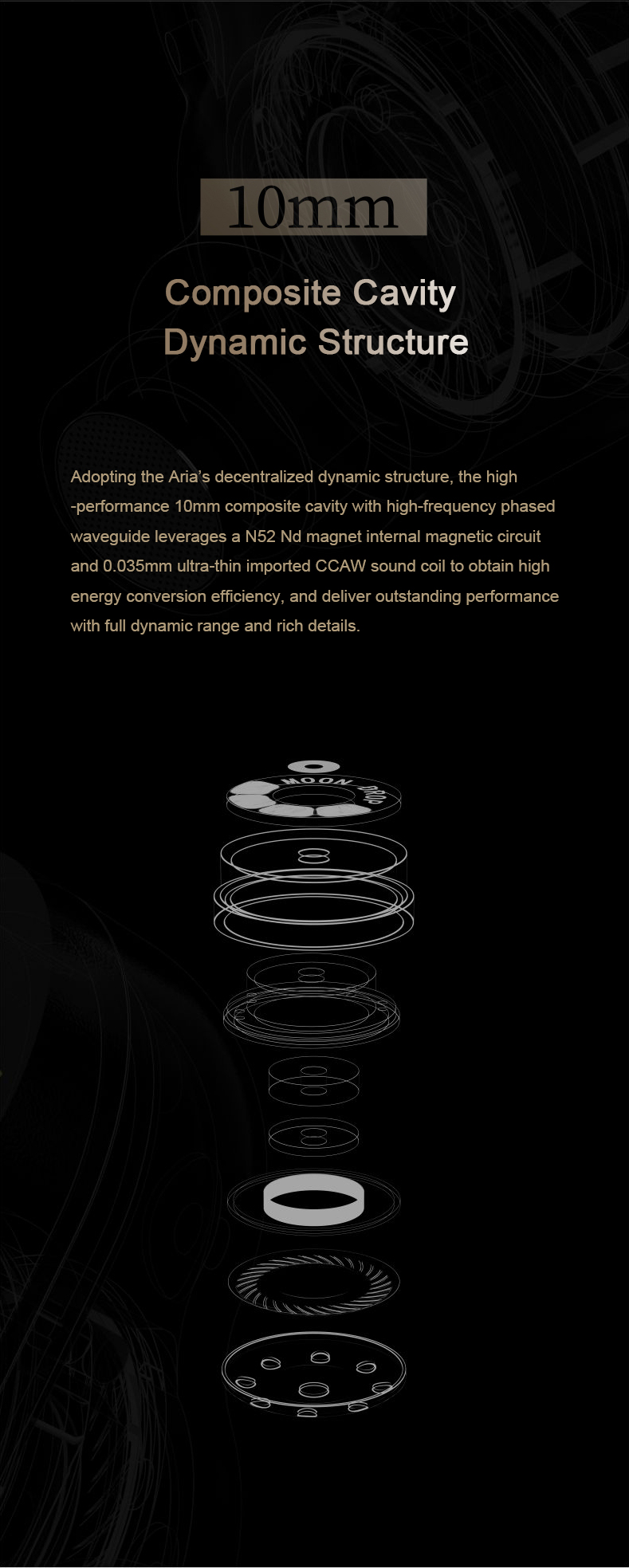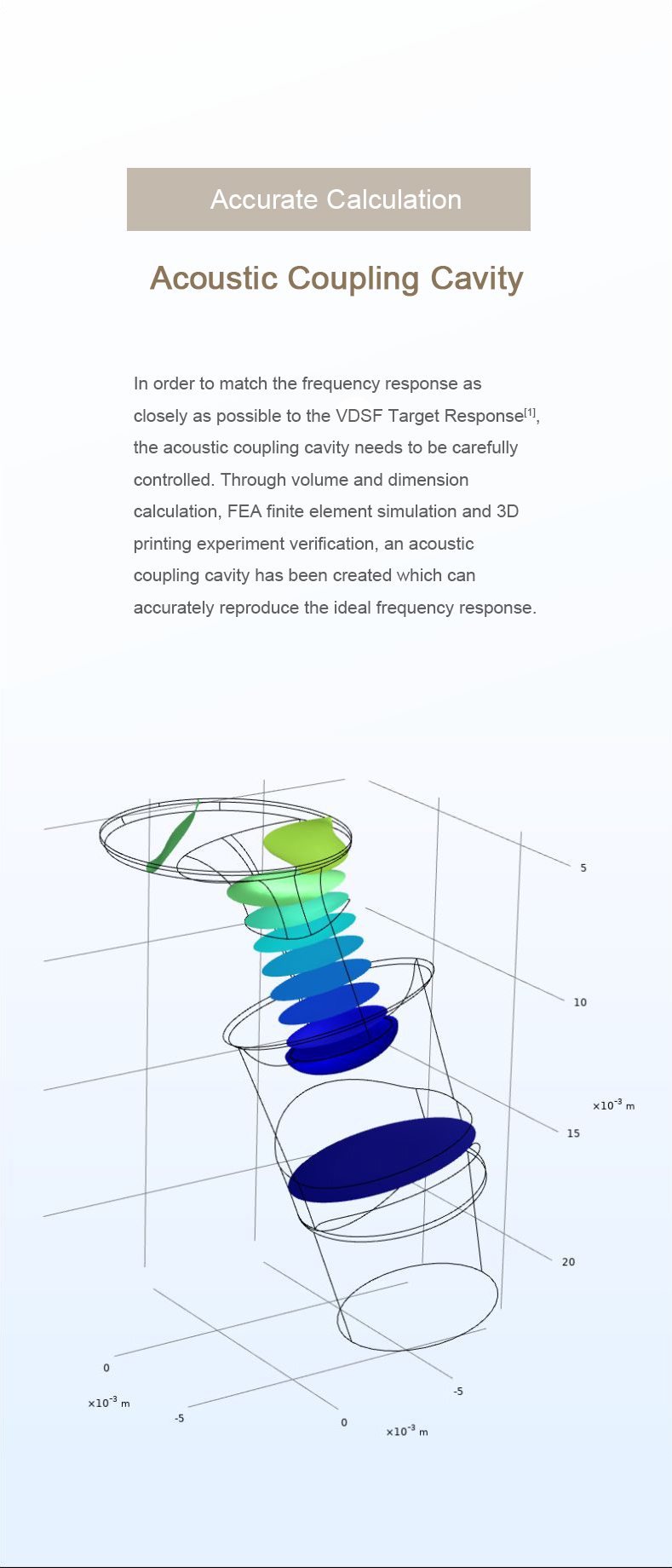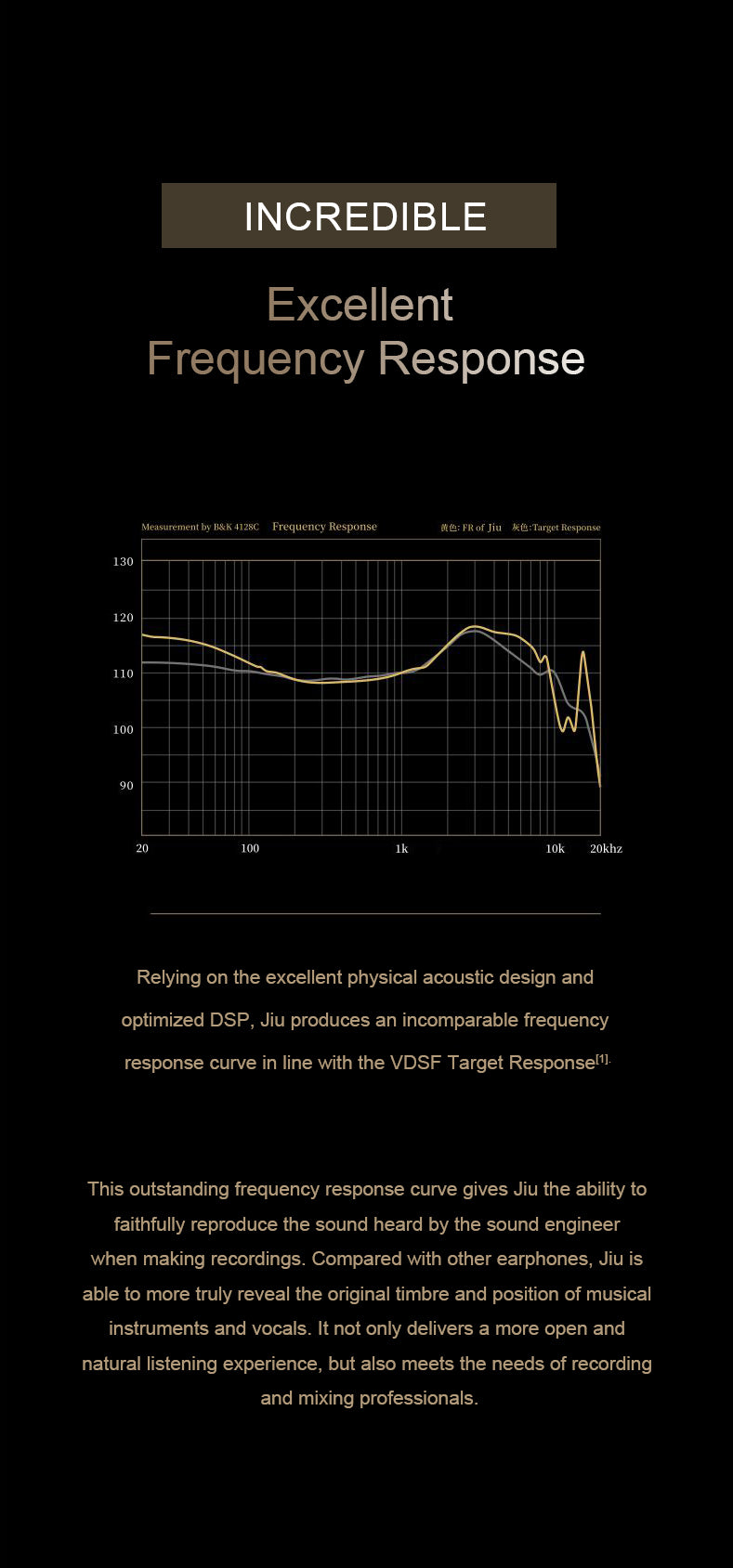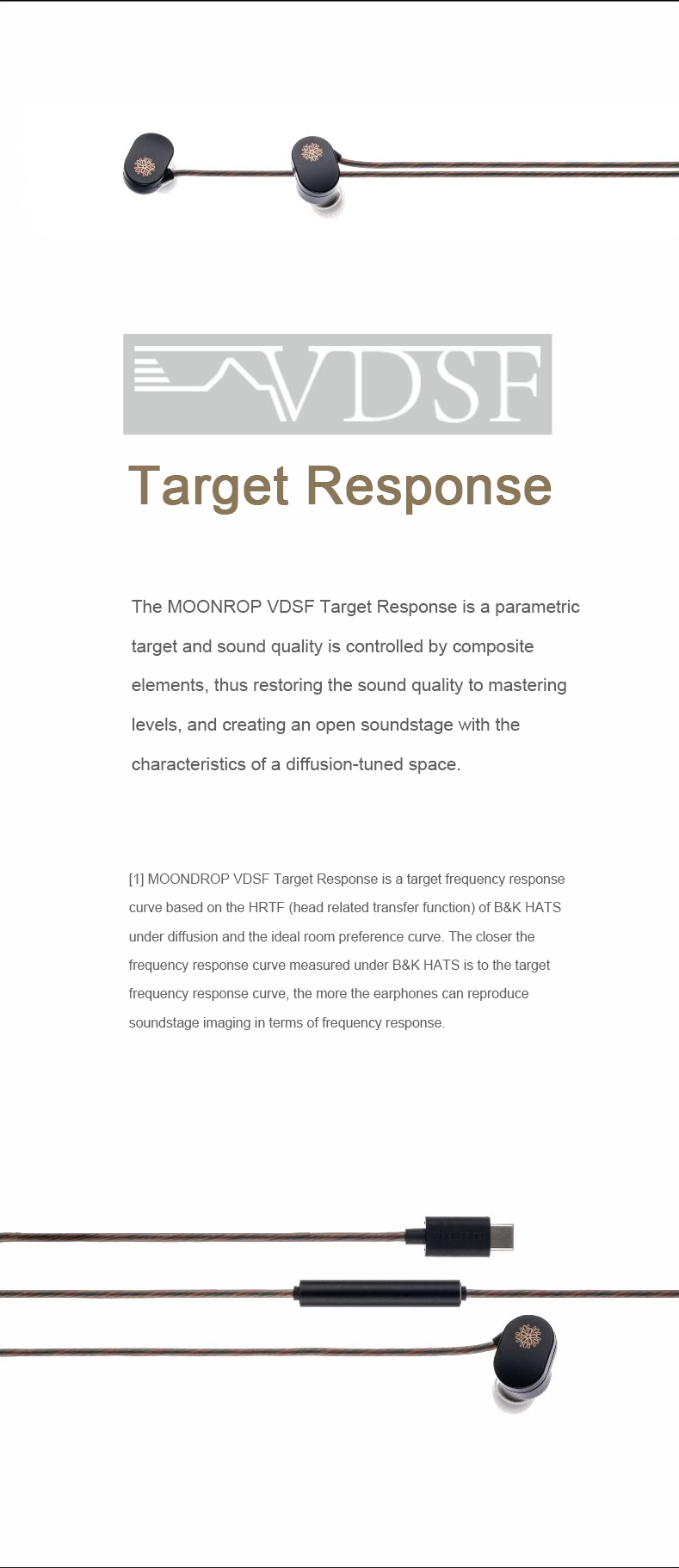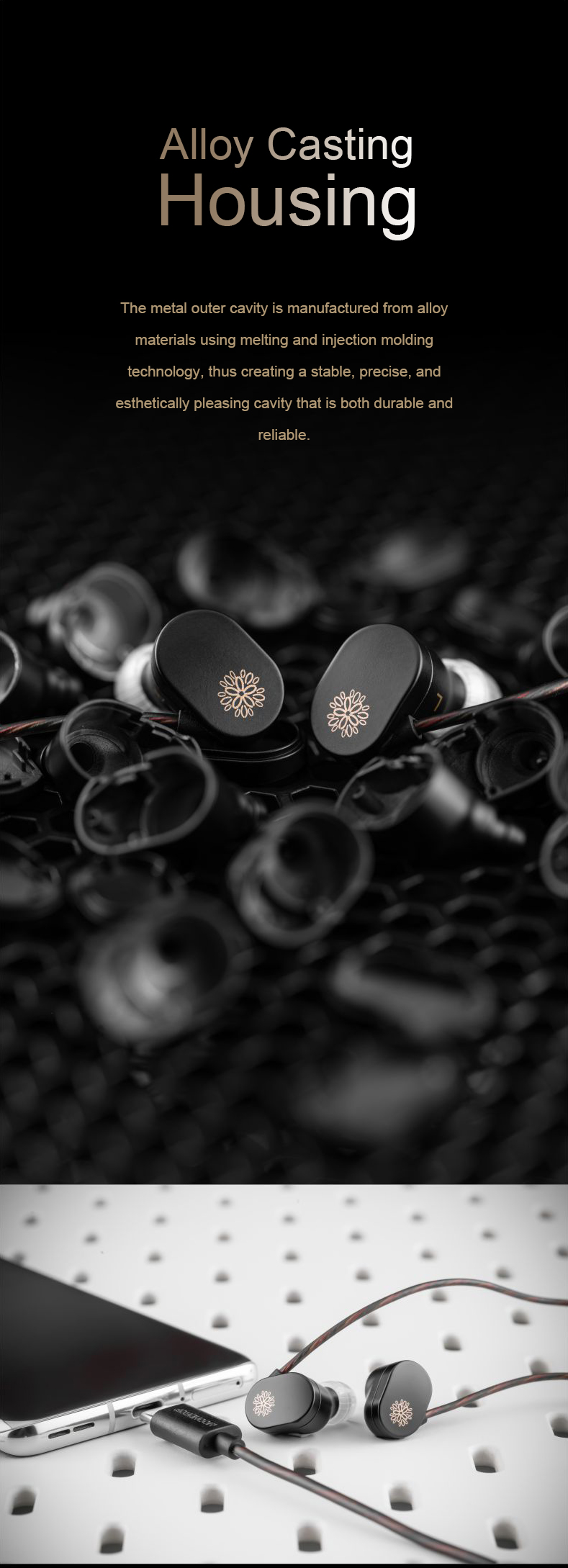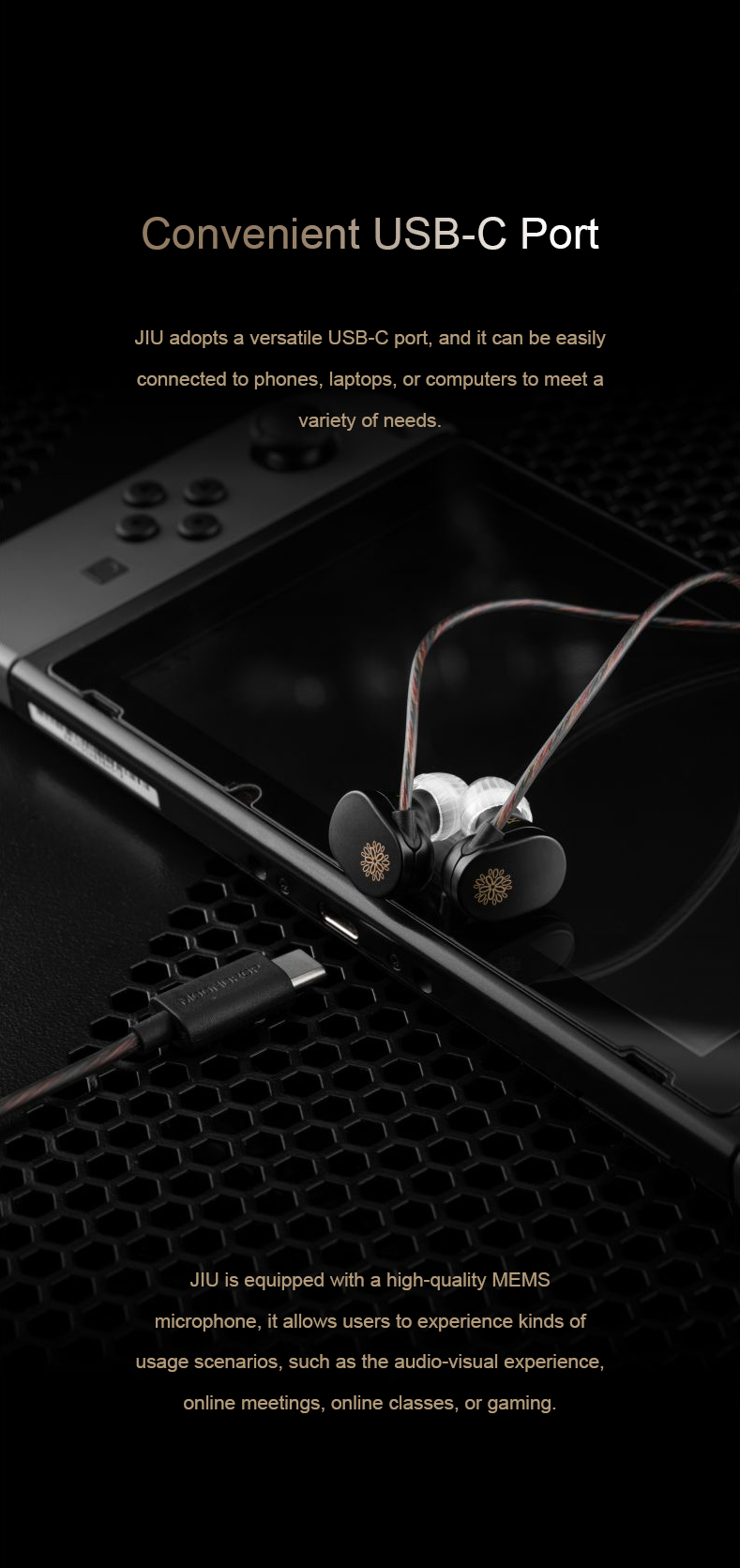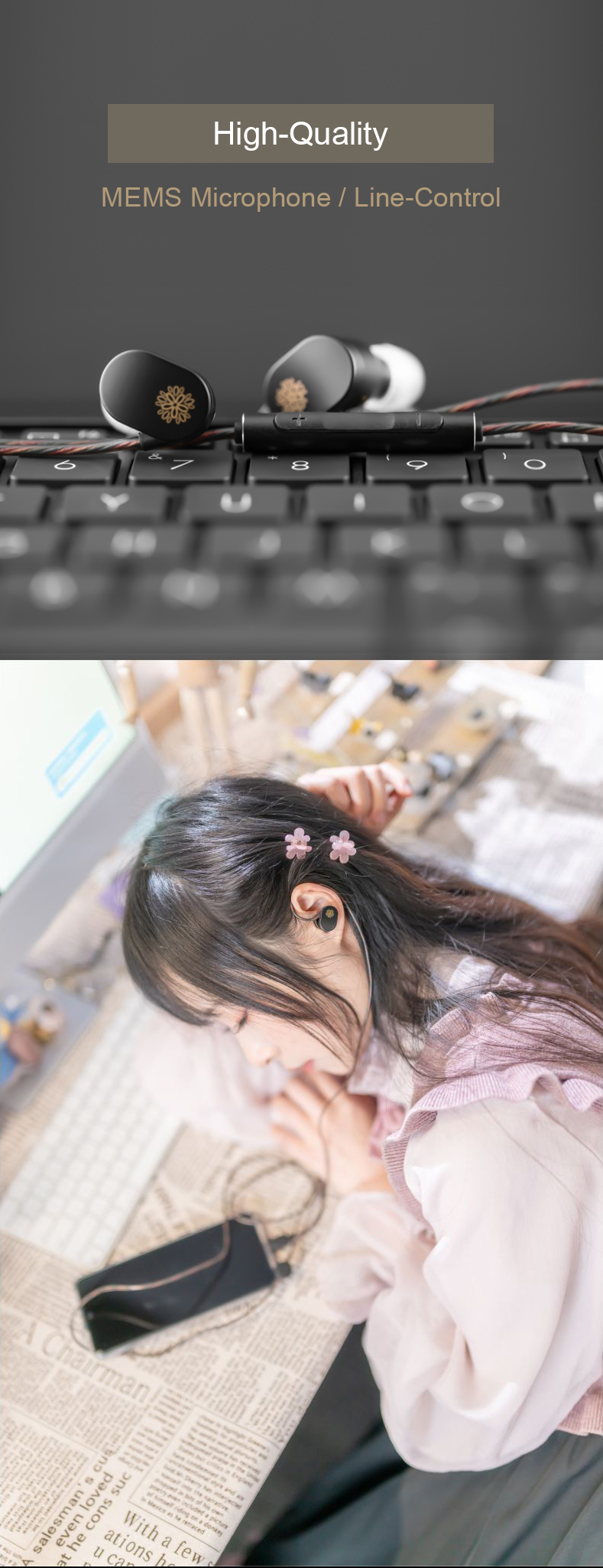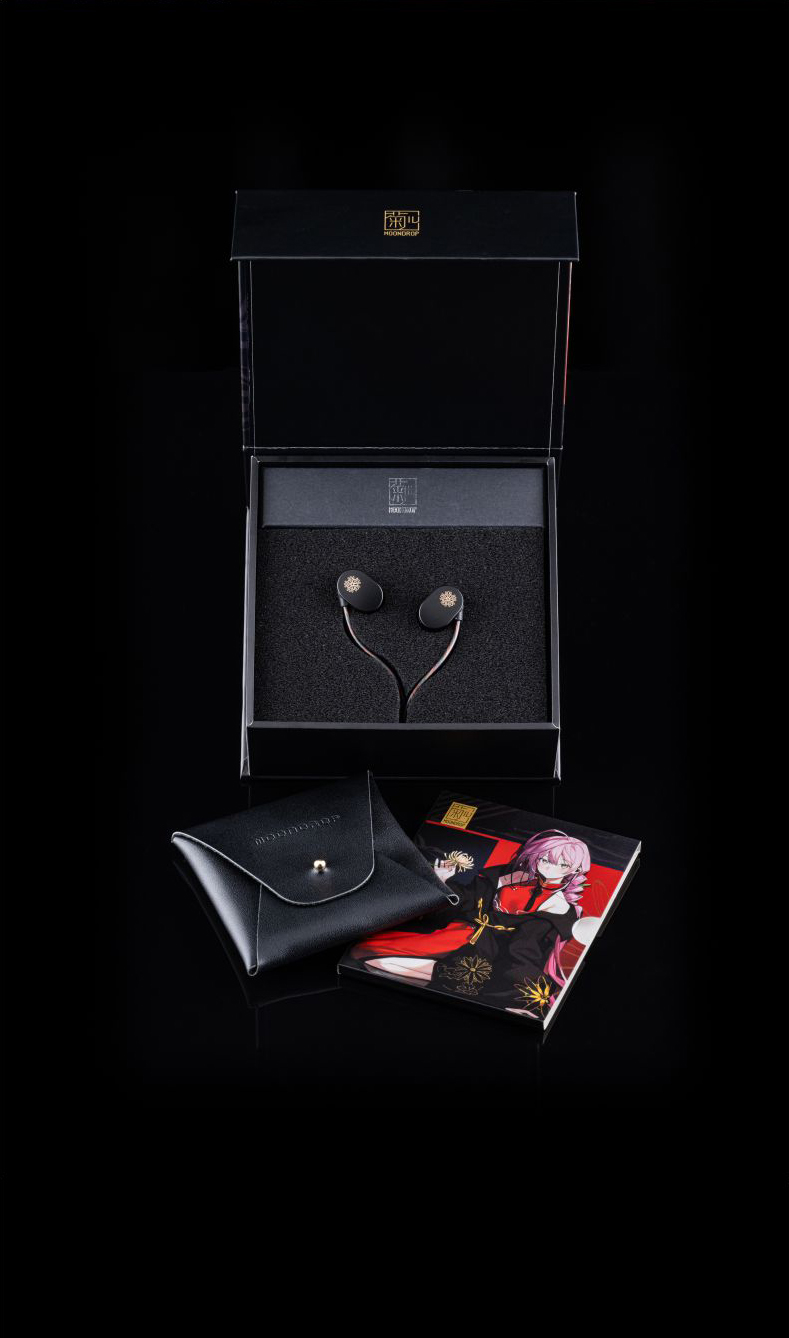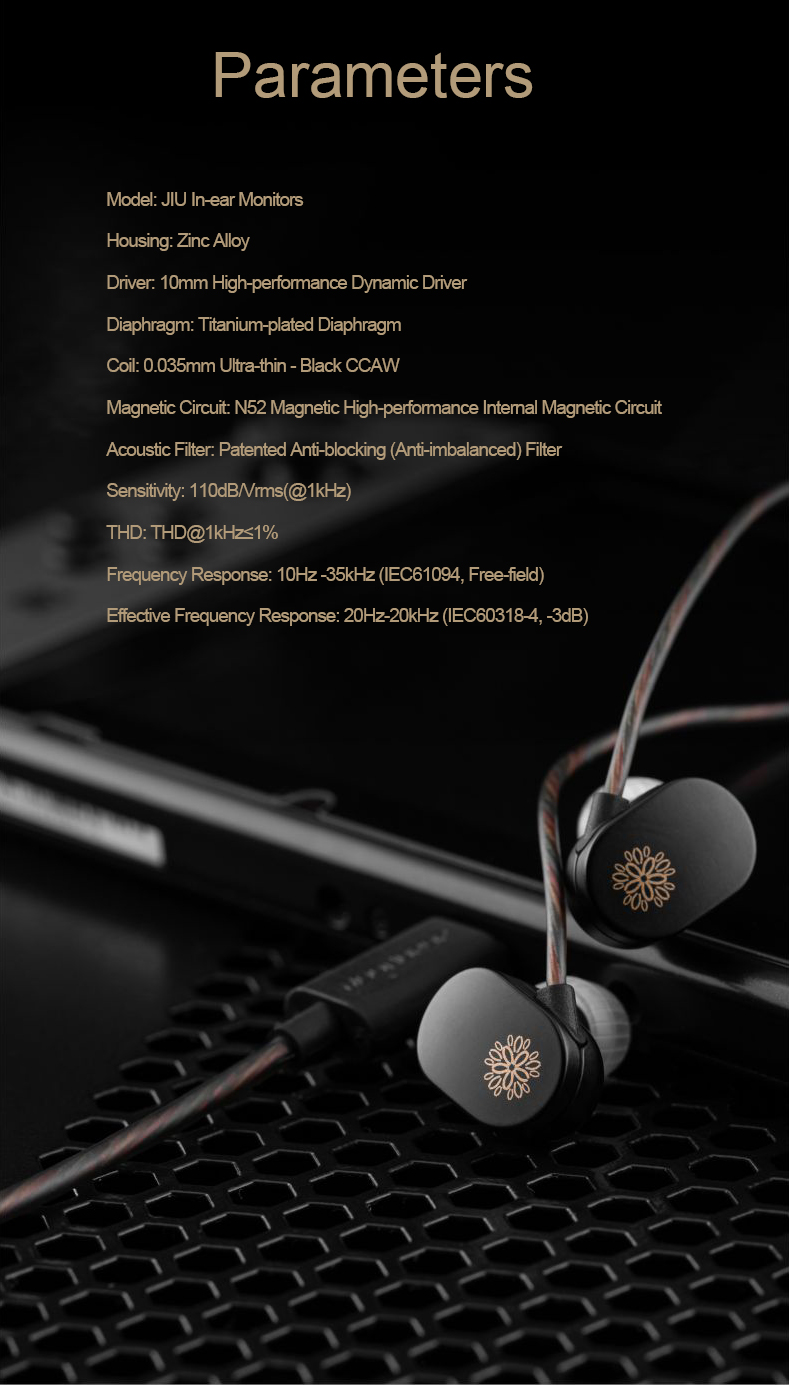Moondrop JIU: my first DSP
Introduction
Moondrop has released the DSP version of the acclaimed CHU: the Moondrop JIU. I am delving into the world of DSP in-ear monitors for the first time, so I invite you to read about my experience with this set!
Moondrop JIU Unboxing: Moondrop JIU Unboxing Short
Check out previous reviews here (or in spanish here)
Disclaimers:
- This product was purchased with my own money
- Analysis over 5 days - Sessions of approximately 2 to 4 hours
- All music is lossless (Qobuz > 16-bit - 44.1kHz)
Unboxing, Build, and Comfort
JIU: The housing is crafted from alloy metal, featuring a minimalist black design with a golden flower emblem. These IEMs are small, bean-shaped, with a nozzle of approximately 5mm. The cable is non-detachable, quite thin, and doesn't tangle easily. On the right side, there's a volume controller and a microphone. The USB-C termination in charge of the DSP process.
Volume Control and Mic: Both work well, although the microphone needs to be brought close to the mouth for clearer voice transmission.
Driver: 10mm dynamic driver with a diaphragm coated in titanium nano crystals.
Pouch/Bag – Earhooks - Moondrop Spring Tips (wide bore eartips) - Waifu
Comfort: Without earhooks = 2.5/5, the Spring Tips provide a good seal, but the cable doesn’t stay correctly over the ears, which can cause the JIU to fall off the ear when adjusted. – With earhooks = 4/5, decent seal. The earhooks disappear over the ears and secure the cable in place. A peculiar but comfortable design overall. These IEMs are great for use while lying down due to their minimal protrusion.
Functionality & Sound
Sound Profile
Credits: Paul Wasabii
Harmanish signature, aiming for Moondrop's VDSF target, with cold or neutral touches as the subbass/bass is less elevated, while the presence region (5kHz) and upper treble in the spectrum present some interesting peaks.
Noise Floor
One of my main issues with the JIU is its noise floor. In passages where the music's volume drops drastically, the hissing is noticeable. It mostly affected the playback of soloists like Adele and Amy Winehouse, as well as orchestras when only a few instruments were playing and background noise could be heard.
Gaming
First, I tested the compatibility of the JIU with Windows, and there were no issues connecting it using a USB-C to USB-A adapter. However, I tried games on my smartphone since I felt more comfortable using them this way.
I played two games: Monument Valley 2 and Motorsport Manager 3. Here, the hiss is quite noticeable when we're in menus where the game music is calm. Jumping into the action, the engine noises are well-defined, and the hiss becomes somewhat less apparent. In Monument Valley, the hiss is more noticeable and bothersome because the game features tranquil background music tracks depending on each level.
How they stack against my usual $20 USD recommendation?
Many of you might think that 7Hz pays me something to use the Zero as a comparison so often in my reviews, but no, I'm simply a reviewer who values a lot the price-to-performance ratio of the products I test, and the Zero were the first ones in this price range that fascinated me with everything they offered. Let's see if the JIU can challenge it!
Credits: Paul Wasabii
Bass
Listening to "All Nighter" by Tiesto and "Suburbia" by Tove Lo, I noticed that the subbass has better reproduction and rumble in the 7Hz Salnotes Zero, but both are close in this regard. On the other hand, the impact and control of the bass are similar in both cases. Neither of the two IEMs stands out in terms of quantity, and in terms of quality, they are on par with the average in this price point. In heavy metal songs like "Welcome To The Circus" by Five Finger Death Punch, both tend to lose a bit of the kick drum, focusing more on the guitarists and the lead vocalist.
Mids
The lower mids have more body and weight in the Zero, giving authority to Sinatra in "Teach Me Tonight." In both cases, the trumpets and saxophone take on a somewhat aggressive character to the ear with good definition (in the case of trumpets, the JIU makes them a bit more piercing). However, the ensemble of instruments harmonizes better in the Zero, presenting itself with some smoothness while making sure to retain as much detail as possible.
During "Rolling in the Deep", the JIU exhibited better tactility and texture as the acoustic guitar is played in the introduction. The presentation of Adele's voice is similar, but here the JIU makes female vocals forward, imbuing them with more energy. However, this is a double-edged sword as the rest of the instrumentation sounds somewhat muted in comparison.
Something interesting is that the Zero faithfully reproduced the reverberations heard in the room where this song was recorded.
Lastly in this section, while listening to the ending of "Granite" by Sleep Token, the JIU showcased their mastery in the upper mids, excellently reproducing the electric guitars. Also, by allowing the lead singer's voice to stand out a bit more (since compared to Sinatra, Vessel's voice is higher-pitched), the JIU avoid excessive congestion between the guitars, bass, and drums. However, the main vocalist's voice can become fatiguing after a while due to the emphasis on the lower treble.
Treble
When I listened to "Rolling in the Deep", the cymbal played on the right side during the chorus shines much brighter with the JIU, potentially becoming somewhat intrusive for some users. The Zero, at volumes between low and normal, relegate it more to the background, presenting a more pleasant experience.
The cymbals, both hi-hats and crashes, in Slayer's "Black Magic" are more upfront and provide an extra sense of detail with the JIU, although they are more piercing in their execution, to the extent that, if you listen genres where many higher pitched percussion instruments are involved, I find it difficult to recommend the JIU. As I listen at lower volumes, the treble of the Zero doesn’t sound fatiguing to me. Even though at normal volumes it isn’t as relaxed, in comparison, for extended listening, I would choose the treble presentation of the Zero every day of the week.
Soundstage and Imaging
The imaging in both is
good for the price, and I would venture to say that the JIU does a better job at localizing the position of instruments while I was listening to "Bohemian Rhapsody/Radio Gaga" from Queen's live album during Live Aid. However, its three-dimensional stage is narrow in width, which in my opinion affects the efficient separation of instruments. It may sound contradictory, but the positioning of the instruments is accurate while their differentiation during "complex" passages is poor.
Regarding soundstage, the Zero is much more capable, with slightly greater depth and spacious width, providing a more realistic experience.
Side Note: The JIU is forgiving to poorly mastered music.
Conclusion
Objectively, Moondrop did a good job with the tuning, with the only flaw being the overwhelming treble reproduction. Despite their neutral signature and solid build, the DSP disappointed me, preventing me from enjoying games or genres like orchestral music due to its constant hissing. While it's nearly imperceptible with more energetic/vivid music, quieter passages are a struggle and quite bothersome.
Considering that these IEMs typically cost around $5 USD more than the 7Hz Salnotes Zero, I don't see many reasons to choose the JIU. They have their advantages like decent construction and comfort, along with some of the best eartips I've tried so far (Spring Tips). However, in terms of sonic and technical attributes, it can't be considered that these are better than the Zero.



